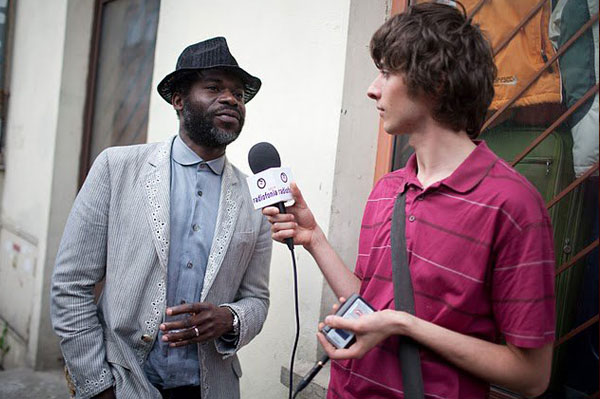Among the curators of the recently concluded London Art Fair, was British Nigerian Sheyi Bankale who curated Photo 50, an exhibition of contemporary photography featuring fifty works.
Bankale’s show Against Nature, takes its title from Joris-Karl Huysmans’ famously decadent fin de siècle novel Against Nature – with an aim of posing questions about the way we interact with photography today.
The idea, explains Bankale, is that during the period the novel was written, and which it evokes, photography was in its infancy. It was being actively debated, it was taking shape, and people were experimenting with technique. That allowed much thinking about photographic media in their own right, as opposed to nowadays when pixels are pure content. Bankale wanted to go back to that more experimental time in spirit by exploring photographs as physical materials and by challenging literal separation between viewers and images. So far, so inoffensive, but the exhibition was not without controversy. This came with the announcement that the Photo 50 line-up of nine artists were all male. Bankale initially defended this in his blog, but has clearly been giving the issue some thought.
He says that he is very much “broad and open” in terms of choosing artists to work with, but that he did choose from wide bodies of work by artists and this is what led him to settle on the people he did. He did not want, having come to the realisation that they were all men, to then try to find a token female artist to “paper over the cracks”.
“I spoke to a number of curators and many of them suggested substituting one of the artists. But I thought that was even worse, I thought that was covering it up.” Better to let it stand as an illustration of what is indeed an issue, he believes. Whether it’s gender or race, different genres of arts and different avenues of artistic education and development may be more or less fruitful in terms of opportunity or even access for certain groups.
Playing devil’s advocate, he also suggests that artists from less traditionally powerful groups may use identity exploration or labels as themes in work (or these may be imposed by others) and that this then limits how they are seen, or the time that they can spend exploring more universal or abstract themes, such as that of his current exhibition. Perhaps anyway, says Bankale, the fact that this exhibition is a celebration of the physicality of art begs the question as to whether this is a subject area populated more by men.
His background, as you can probably tell, is in photography as a strand of contemporary art, rather than reportage or other more conventional photographic genres. He runs his own publication, Next Level, which documents contemporary photography by focussing on a different place in the world each issue (most recently Pittsburgh and Copenhagen).
But on his radar, bleeping insistently, is Africa. “It is well overdue.”
Where in Africa? Nigeria, where he has connections and has lectured in the past at Lagos’ Centre for Contemporary Art? Benin, given he says that he is particularly impressed by Beninese photographer Leonce Raphael Agbodjelo? Elsewhere? In fact, says Bankale, he wants to document cities across Africa. With 54 countries, covering all of them is no doubt unrealistic, but he at least wants to identify one location each in West Africa (he has expertise in West African photographic art), East Africa, Central Africa and Southern Africa. Every place is different, with its own artistic scene and sensibilities, but he hopes to be able to draw connections and patterns using the selected places as ‘pivotal points’ to build some kind of meaningful picture of the contemporary art photography as explored and practised across the continent.
The stumbling block is financial. In Africa, says Bankale, the funding infrastructure for such projects does not tend to exist, but he is hoping to produce African editions “much sooner rather than later”. Once this element is in place, Bankale says he is greatly looking forward to conversations about how to help build links between Britain and local African art scenes.
The UK, says Bankale, is currently behind in its engagement with African art. He says that he took a number of works by Leonce Agbodjelo to the United States and that they received a great reaction. “It’s interesting how the response in the US compares to the UK. I think there needs to be a little more education in the UK about West African art. Obviously there is a strong influence in France – the Francophones get it, in a sense – and in America, American black history is an important influence in terms of its recognition. It’s a bit thinner ground in the UK. But it’s growing, that’s for sure.”
Rachel Hamada

